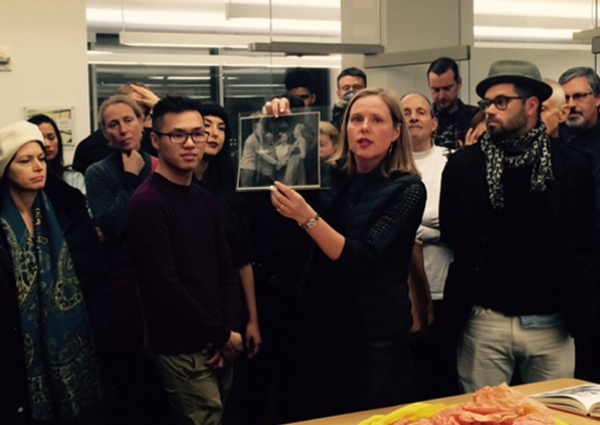UNITED STATES TO GREECE
Analyzing contemporary artifacts to understand society and the creative output of today
Michelle Elligott (Fulbright Scholar, 2005–2006) has been Chief of Archives, Library, and Research Collections at The Museum of Modern Art (MoMA) since 2017, having joined the institution as a Mellon Fellow in 1995. Ms. Elligott’s publications have garnered many accolades. Her book, Modern Artifacts, appeared on the Best Art Books of 2020 lists of The New York Times, Los Angeles Times, and The Brooklyn Rail. New York Magazine hailed it as one of the Ten Best Art Books of 2020. An earlier publication, René d’Harnoncourt and The Art of Installation, was named to The New York Times Best Art Books list in 2018 and earned the Art Libraries Society of North America Worldwide Books Award in 2019.
Ms. Elligott was part of the curatorial team for the newly reimagined MoMA collection reinstallation in 2019. In 2017, she curated the exhibition Devenir moderne, part of the Museum’s exhibition Etre moderne at the Fondation Louis Vuitton in Paris. Ms. Elligott was a fellow at the 2016 International Curatorial Institute, administered by the Center for Curatorial Leadership, MoMA, and Columbia Business School. In addition, she has also co-directed the Museum's widely acclaimed Exhibition History web archive project and co-edited the institution's first self-published history, Art in Our Time: A Chronicle of The Museum of Modern Art (2004).
A life-long hellenophile, among Elligott's fondest memories is of the time she spent in Greece as a Fulbright Scholar at the Benaki Museum in Athens (2005–2006). It is there that her contemporary practice began to crystallize—part archaeologist, part art historian, part archivist. It is through the lessons learned from the study of Greek antiquities, that she now applies that lens to analyzing contemporary artifacts to understand our society and creative output of today.
Of her Fulbright experience, she has this to say: “I feel at home in the Archives because of the direct contact with the unique historical documents. I am trained as an art historian, but before settling on modern art as my specialty, I considered pursuing ancient art and archaeology. My role today is that of a modern archaeologist, digging up evidence to explain the workings of recent history; instead of unearthing potsherds, I consult correspondence, diaries, and photo graphs. For me, it’s not enough to simply read a book in which someone else describes what happened. Hearsay can so easily replace truth (just look at this era of “fake news”) over time, but having direct access to the source documents allows us to evaluate for ourselves how something happened. These materials are the evidence of what actually occurred—people’s thoughts, actions, and working methodology. They have an unparalleled immediacy and relevance.”

